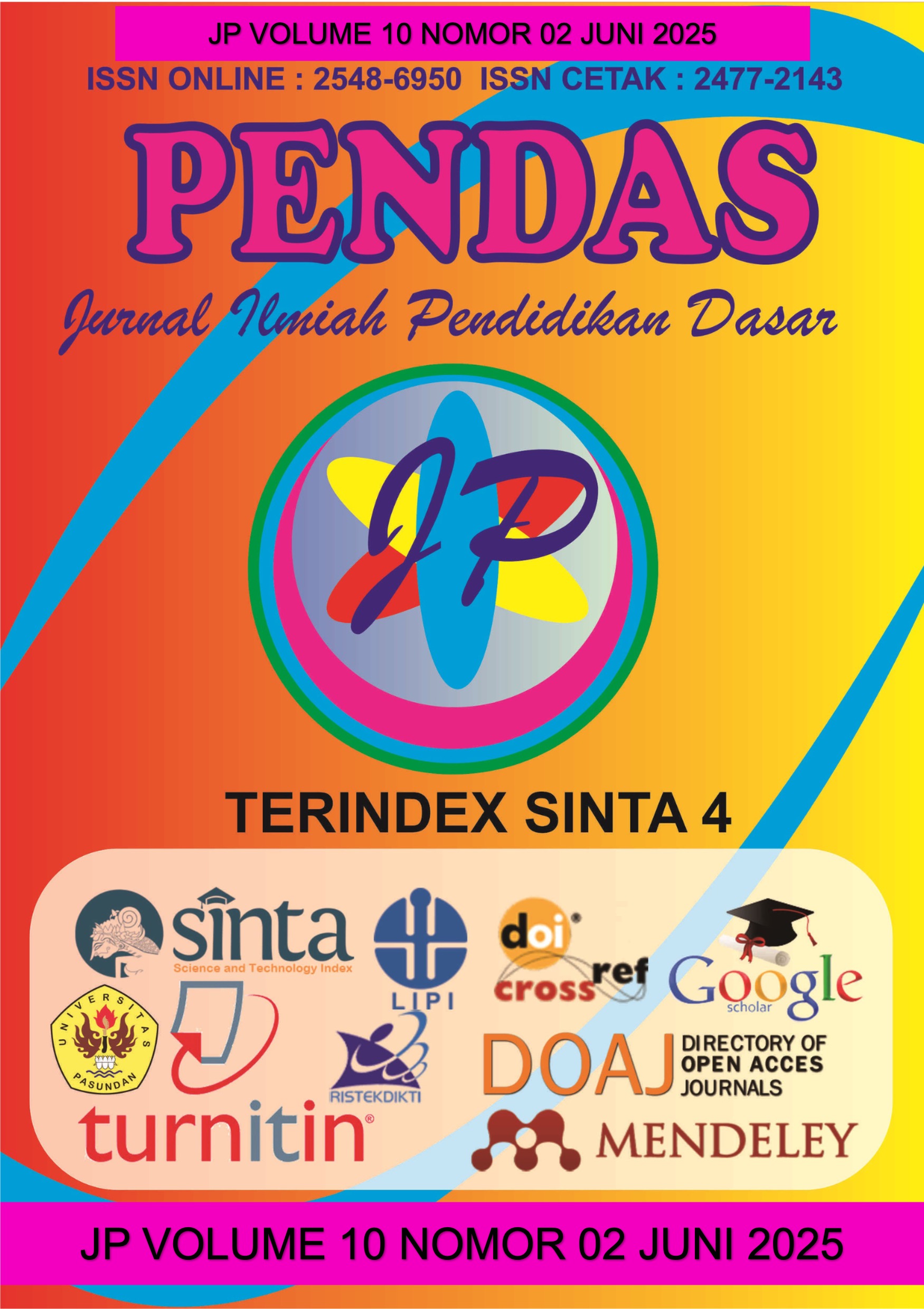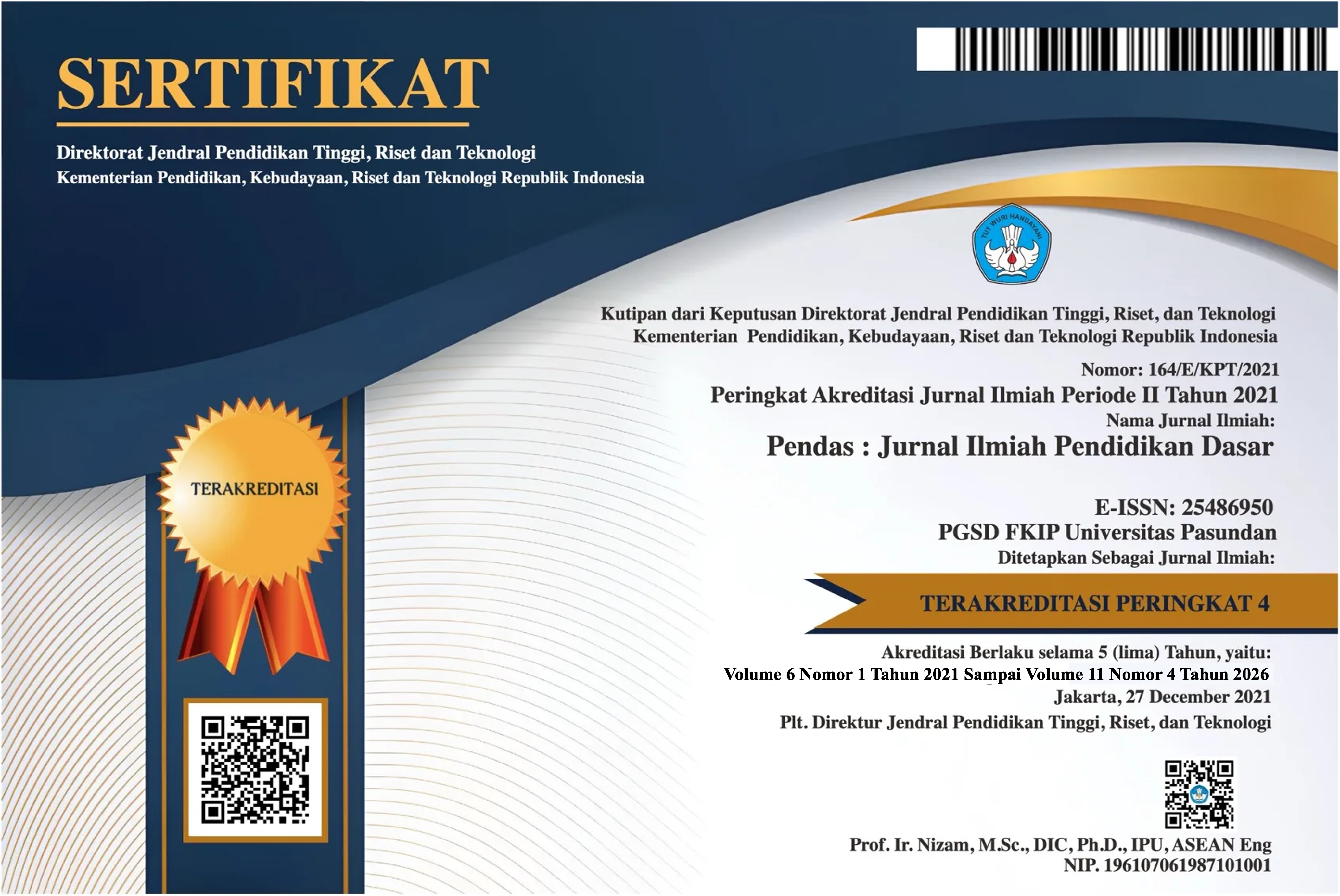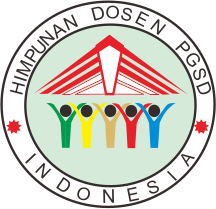The Implementation of the Qur'an Tahfidz Programme at SD Muhammadiyah MBS Prambanan, Sleman: A Case Study on Its Impact on Academic Character and Islamic Identity Development
DOI:
https://doi.org/10.23969/jp.v10i02.24581Keywords:
Tahfidz Al-Qur’an 1, Islamic education 2, character development 3Abstract
Qur’anic education plays a pivotal role in shaping the moral and spiritual foundation of Muslim students. This study explores the implementation of the Tahfidz Al-Qur’an program at SD Muhammadiyah MBS Prambanan, focusing on its impact on students’ academic character development and Islamic identity. Employing a qualitative descriptive method, data were collected through interviews, observations, and documentation involving Tahfidz instructors, program coordinators, and sixth-grade students. Findings indicate that the program integrates structured memorization practices such as Talaqqi, Tahsin, Muroja’ah, and Tasmi’ within a pesantren-based curriculum. Key strategies include personalized mentoring, level-based memorization groupings, and formal assessments (munaqosyah) to evaluate students’ fluency and tajwid accuracy. Despite challenges such as heterogeneous memorization capabilities and limited instructional time, the program fosters discipline, spiritual resilience, and intrinsic motivation, supported by strong collaboration among teachers and parents. This study underscores the transformative role of Qur’anic memorization in nurturing both academic excellence and character integrity, offering implications for strengthening Qur’anic pedagogy in Islamic elementary education.
Downloads
References
Abror, M. B. A.-M., & Suud, F. M. (2024). Evaluation of the special tahfidz program using the context , input , process , product model. Al-MISBAH (Jurnal Islamic Studies), 12(2), 129–146. https://doi.org/https://doi.org/10.26555/almisbah.v12i2.11009
Anoum, P., Arifa, F., & May, C. (2022). Strategies to Increase the Motivation of Tahfidz Al-Quran. Journal International Inspire Education Technology, 1(2), 74–85. https://doi.org/10.55849/jiiet.v1i2.88
Ansari, I., Hafiz, H. A., & Hikmah, N. (2020). Pembelajaran Tahfidz Al-Qur ’ an Melalui Metode Wafa Di SDIT Nurul Fikri Banjarmasin. Jurnal Ilmiah Pendidikan Dasar, 2(2), 180–194.
Arifin, B., & Setiawati, S. (2021). Gambaran Strategi Pembelajaran Tahfidz Al-Quran. Jurnal Pendidikan Tambusai, 5(2), 4886–4894.
Azmi, M. H. A. M., Din, N. A. M. N., Khalis, M. I. M., Jani, H. M., & Ahmad, M. R. (2024). Key Factors Influencing the Success of Al-Quran Memorization Among Tahfiz Students. Al-Hikmah, 16(2), 141–155. Retrieved from https://spaj.ukm.my/jalhikmah/index.php/jalhikmah/article/view/530
Baiti, N. N., Nahar, S., & OK, A. H. (2023). Penerapan metode sabak, sabki dan manzil dalam pembelajaran tahfidz di sekolah menengah pertama. Jurnal EDUCATIO: Jurnal Pendidikan Indonesia, 9(2), 986. https://doi.org/10.29210/1202323414
Chanifah, N., Hanafi, Y., Mahfud, C., & Samsudin, A. (2021). Designing a spirituality-based Islamic education framework for young muslim generations: a case study from two Indonesian universities. Higher Education Pedagogies, 6(1), 195–211. https://doi.org/10.1080/23752696.2021.1960879
Herma, T., Kusyairy, U., & T, M. R. (2020). Analisis Penerapan Metode Tabarak Menghafal Al-Qur’an Juz 30 Di Sekolah Tahfidz Al-Husna Balita Dan Anak Makassar. In NANAEKE: Indonesian Journal of Early Childhood Education (Vol. 3, p. 37). https://doi.org/10.24252/nananeke.v3i1.14332
Isnawati, N., & Hudha, M. C. (2024). Implementasi Program Tahfidz Al-Qur’an di SMA Muhammadiyah Pacitan. Jurnal Pendidikan Islam, 14(1), 9–21. https://doi.org/10.38073/jpi.v14i1.1492
Khoirulloh, A. N., Hafidz, & Nashihin, H. (2023). Strategi Menghafal Al-Quran Santri Pondok Pesantren Tahfidzul quran Griya Quran 3 Klaten. Jurnal Pendidikan, 5(2).
Lim, W. M. (2024). What Is Qualitative Research? An Overview and Guidelines. Australasian Marketing Journal, 1–31. https://doi.org/10.1177/14413582241264619
Marlangen, A. R., Astutik, A. P., & Fahyuni, E. F. (2023). STRATEGI SEKOLAH DALAM MENCETAK GENERASI QUR’ANI. Jurnal Pendidikan Agama Islam, 4(1), 88–100. https://doi.org/10.19109/pairf.v5i2
Molbæk, M., & Kristensen, R. M. (2020). Triangulation with video observation when studying teachers’ practice. Qualitative Research Journal, 20(1), 152–162. https://doi.org/10.1108/QRJ-07-2019-0053
Natow, R. S. (2020). The use of triangulation in qualitative studies employing elite interviews. Qualitative Research, 20(2), 160–173. https://doi.org/10.1177/1468794119830077
Nurhaliza, N., Darmawan, H., Hakti, F., Khairani, A., & Kassim, Z. (2024). Analysis of the Al-Qur’an Memorization Program’s Implementation at the Rumah Tahfidz Al-Haramain Banjarmasin. Jurnal Pendidikan Islam, 14(2), 78–89. https://doi.org/10.38073/jpi.v14i2.1805
Papadakis, S., Alexandraki, F., & Zaranis, N. (2022). Mobile device use among preschool-aged children in Greece. In Education and Information Technologies (Vol. 27). Springer US. https://doi.org/10.1007/s10639-021-10718-6
Ramadhani, W., & Aprison, W. (2022). Urgensi Pembelajaran Tahfidz Al- Qur ’an d i Era 4.0. JURNAL Pendidikan Tambusai, 6(2), 13163–13171.
Rizka, E., Kenedi, G., Rehani, R., & Ramanda, D. (2022). Strategi Peningkatan Kemampuan Peserta Didik Dalam Pembelajaran Tahfizh Al-Qur’an Di SDIT Adzkia 3 Padang. Ikhtisar: Jurnal Pengetahuan Islam, 2(1), 18. https://doi.org/10.55062//ijpi.2022.v2i1.50
Rohmatillah, S., & Shaleh, M. (2018). Manajemen Kurikulum Program Tahfidz Al-Qur’an di Pondok Pesantren Salafiyah Syafi’iyah Al-Azhar Mojosari Situbondo. Jurnal Pendidikan Islam Indonesia, 3(1), 107–267. https://doi.org/10.35316/jpii.v3i1.91
Rustiana, D., & Ma`arif, M. A. (2022).
Downloads
Published
Issue
Section
License
Copyright (c) 2025 Pendas : Jurnal Ilmiah Pendidikan Dasar

This work is licensed under a Creative Commons Attribution 4.0 International License.



















